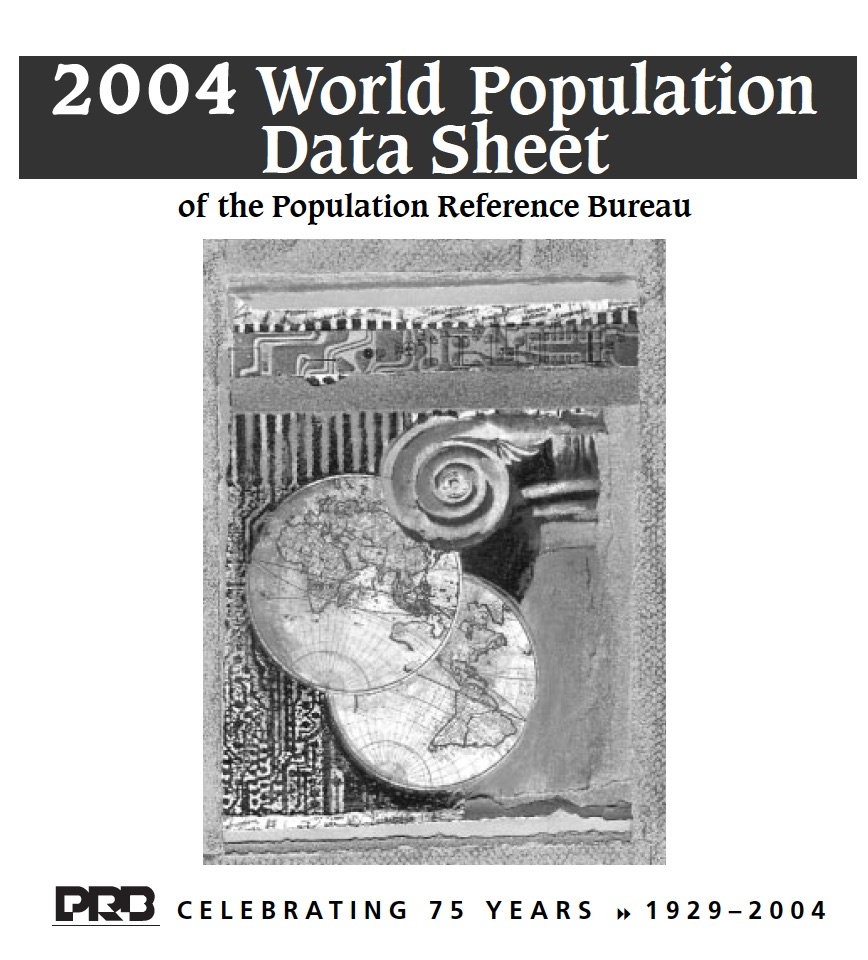
2004 World Population Data Sheet
Product: World Population Data Sheet
Author: PRB
Date: August 4, 2004
DEEP DEMOGRAPHIC DIVIDE DOMINATES WORLD POPULATION
Unequal Population Growth Key Factor in Disparities Between Rich, Poor Nations
(Washington, DC, Aug. 17, 2004) The starkly uneven pace of population growth between most developing and industrialized nations represents the world’s major demographic fault line. The Population Reference Bureau’s just-released 2004 World Population Data Sheet demonstrates that nearly 99 percent of all population increase takes place in poor countries, while population size is static or declining in the rich nations. Among the major industrialized nations, only the United States now has significant population growth.
As a consequence, by 2050 industrialized countries are projected to increase their population by merely 4 percent. In contrast, the population of developing countries is expected to expand by 55 percent. For example, Western European populations will shrink, while Western Asian nations are expected to gain about 186 million people by 2050. Overall, world population will likely reach 9.3 billion by mid-century.
“The demographic contrasts between Japan and Nigeria, two countries with roughly equal population sizes today, illustrate the differing challenges faced by rich and poor countries,” said Carl Haub, PRB senior demographer and the 2004 World Population Data Sheet‘s author.
Haub noted, “Clearly, Nigeria has millions of young people to educate and employ. Vast investments are needed to provide a higher quality of life for Nigeria’s growing population, while Japan must find ways to take care of more and more retired people and still maintain an adequate workforce.
“Recent population slowing in Europe has created the impression that world population is well on the way to stability,” added Haub. “But so many demographic anomalies exist that the future is uncertain.”
The 2004 World Population Data Sheet has the most up-to-date demographic data and estimates for all the countries and major regions of the world. The rundown provides a look at regional and national contrasts in age structure, population growth, life expectancy, income, and other determinants that mark today’s deep demographic divisions.

 ">
">